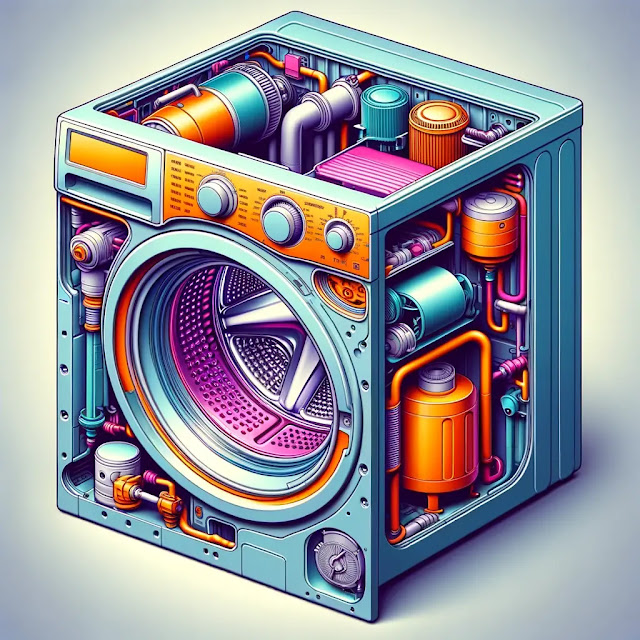For optimal washer performance, it's essential to understand the crucial components and their roles. This guide explores the fundamental parts of your washer, helping you diagnose and fix common issues that may affect its functionality.
Key Components of Your Washer
The washer is composed of several important elements, each critical for its operations:- Motor and Transmission: The motor, the powerhouse of the washer, drives the transmission, which adjusts the machine's speed and rotation.
- Tubs and Agitator: The tubs hold the washing solution and clothes, while the agitator, situated in the inner tub, moves the clothes through the water, aiding in the cleaning process.
- Pumps and Water Valve: Pumps are utilized to recirculate or drain water, depending on the cycle. The water valve manages the flow of water into the machine.
- Timer and Control Panel: The timer controls the sequence of washing, rinsing, and spinning cycles. The control panel is the user interface, where selections and settings are made.
https://medium.com/@fixitrightappliances.ca/essential-guide-to-diy-washer-repair-key-parts-and-components-eaa5f6ac3310
Common Washer Problems and Solutions
Several typical issues might arise with your washer, affecting its performance. Here’s how to address some of the most common faults:- Drainage Issues: Problems with draining are usually linked to a clogged or malfunctioning pump. Clearing blockages or replacing the pump should resolve these issues.
- Abnormal Noises: Strange sounds can indicate issues with the drum or motor. Inspecting these parts for damage and making necessary repairs can help eliminate these noises.
- Washer Failing to Start: If your washer doesn't start, the problem could be related to the power supply or a faulty control panel. Checking for secure electrical connections or replacing the control panel can often fix this problem.

Comments
Post a Comment